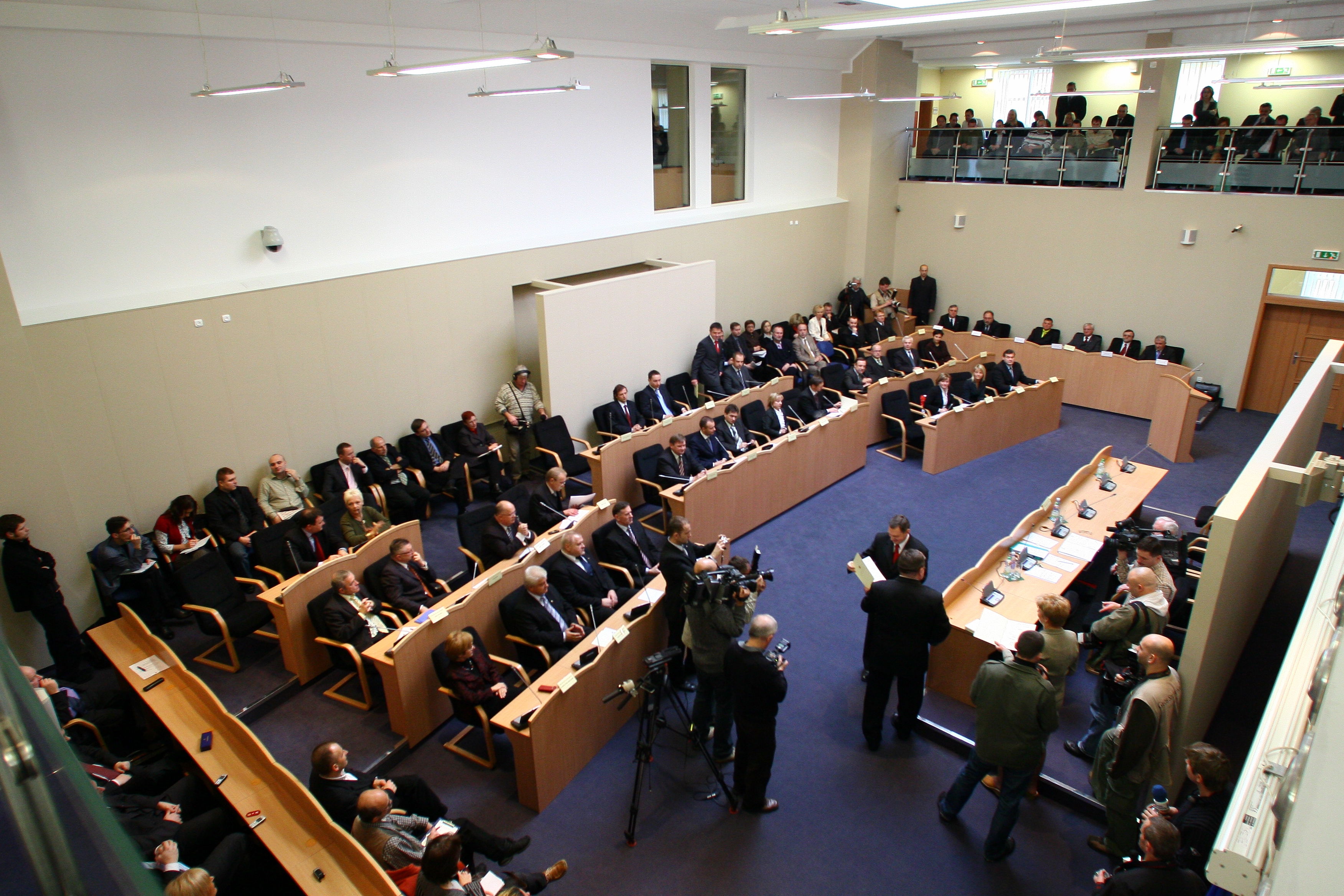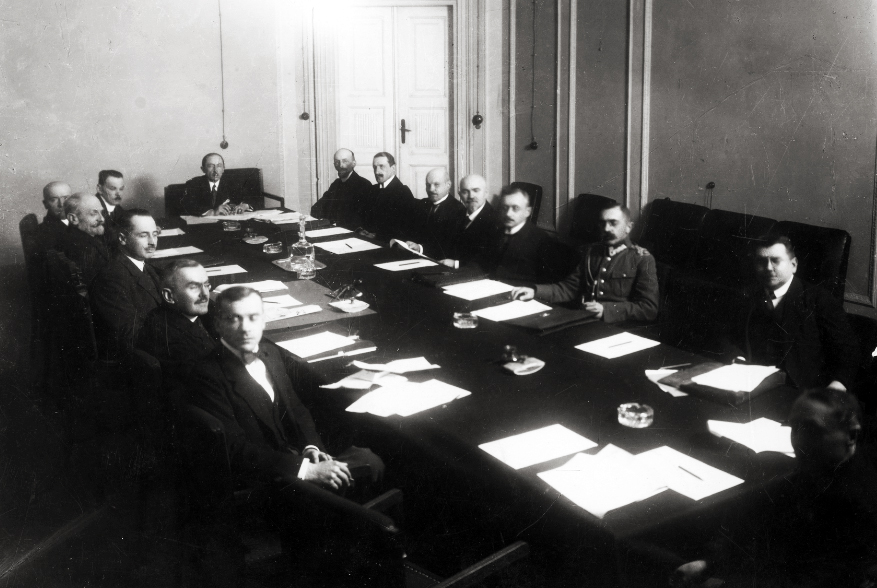|
Voivodeship Marshal
A voivodeship marshal ( pl, marszałek województwa, ) is the head of the provincial-level government for each of the sixteen voivodeships of Poland. Elected by councillors from the provincial assembly, the marshal is the head of the collective voivodeship executive board, which acts as the ''de facto'' cabinet for the region.Council of Europe, p. 17 The current competences and traditions of the contemporary voivodeship marshal stem from the Public Administrative Reform Act of 1998, which went into effect in January 1999. Election A voivodeship marshal is elected by an absolute majority from the voivodeship sejmik in the presence of at least half of all assembly members. Prokop, p. 144 The marshal must be elected from among the councillors of the assembly. At most, two other vice-marshals are additionally elected to sit with the marshal on the executive board by the assembly. To dismiss the marshal, three-fifths of the sejmik must agree to his or her vote of no confidence, which ... [...More Info...] [...Related Items...] OR: [Wikipedia] [Google] [Baidu] |
Voivode
Voivode (, also spelled ''voievod'', ''voevod'', ''voivoda'', ''vojvoda'' or ''wojewoda'') is a title denoting a military leader or warlord in Central, Southeastern and Eastern Europe since the Early Middle Ages. It primarily referred to the medieval rulers of the Romanian-inhabited states and of governors and military commanders of Hungarian, Balkan or some Slavic-speaking populations. In the Polish-Lithuanian Commonwealth, ''voivode'' was interchangeably used with ''palatine''. In the Tsardom of Russia, a voivode was a military governor. Among the Danube principalities, ''voivode'' was considered a princely title. Etymology The term ''voivode'' comes from two roots. is related to warring, while means 'leading' in Old Slavic, together meaning 'war leader' or 'warlord'. The Latin translation is for the principal commander of a military force, serving as a deputy for the monarch. In early Slavic, ''vojevoda'' meant the , the military leader in battle. The term has ... [...More Info...] [...Related Items...] OR: [Wikipedia] [Google] [Baidu] |
Government Of Poland
The Government of Poland takes the form of a unitary parliamentary representative democratic republic, whereby the President is the head of state and the Prime Minister is the head of government. However, its form of government has also been identified as semi-presidential. Executive power is exercised, within the framework of a multi-party system, by the President and the Government, which consists of the Council of Ministers led by the Prime Minister. Its members are typically chosen from the majority party or coalition, in the lower house of parliament (the ''Sejm''), although exceptions to this rule are not uncommon. The government is formally announced by the President, and must pass a motion of confidence in the ''Sejm'' within two weeks. Legislative power is vested in the two chambers of parliament, ''Sejm'' and Senate. Members of Sejm are elected by proportional representation, with the proviso that non-ethnic-minority parties must gain at least 5% of the national vote to ... [...More Info...] [...Related Items...] OR: [Wikipedia] [Google] [Baidu] |
Voivodeship Assemblies In Poland
A voivodeship is the area administered by a voivode (Governor) in several countries of central and eastern Europe. Voivodeships have existed since medieval times and the area of extent of voivodeship resembles that of a duchy in western medieval states, much as the title of voivode was equivalent to that of a duke. Other roughly equivalent titles and areas in medieval Eastern Europe included ban (bojan, vojin or bayan) and banate. In a modern context, the word normally refers to one of the provinces ''( województwa)'' of Poland. , Poland has 16 voivodeships. Terminology A voi(e)vod(e) (literally, "leader of warriors" or "war leader", equivalent to the Latin "''Dux Exercituum''" and the German "''Herzog''") was originally a military commander who stood, in a state's structure, next to the ruler. Later the word came to denote an administrative official. Words for "voivodeship" in various languages include the uk, воєводство; the pl, województwo; the ro, voievoda ... [...More Info...] [...Related Items...] OR: [Wikipedia] [Google] [Baidu] |
Białystok
Białystok is the largest city in northeastern Poland and the capital of the Podlaskie Voivodeship. It is the tenth-largest city in Poland, second in terms of population density, and thirteenth in area. Białystok is located in the Białystok Uplands of the Podlachian Plain on the banks of the Biała River, by road northeast of Warsaw. It has historically attracted migrants from elsewhere in Poland and beyond, particularly from Central and Eastern Europe. This is facilitated by the nearby border with Belarus also being the eastern border of the European Union, as well as the Schengen Area. The city and its adjacent municipalities constitute Metropolitan Białystok. The city has a warm summer continental climate, characterized by warm summers and long frosty winters. Forests are an important part of Białystok's character and occupy around (18% of the administrative area of the city) which places it as the fifth-most forested city in Poland. The first settlers arrived in ... [...More Info...] [...Related Items...] OR: [Wikipedia] [Google] [Baidu] |
Strasbourg
Strasbourg (, , ; german: Straßburg ; gsw, label= Bas Rhin Alsatian, Strossburi , gsw, label= Haut Rhin Alsatian, Strossburig ) is the prefecture and largest city of the Grand Est region of eastern France and the official seat of the European Parliament. Located at the border with Germany in the historic region of Alsace, it is the prefecture of the Bas-Rhin department. In 2019, the city proper had 287,228 inhabitants and both the Eurométropole de Strasbourg (Greater Strasbourg) and the Arrondissement of Strasbourg had 505,272 inhabitants. Strasbourg's metropolitan area had a population of 846,450 in 2018, making it the eighth-largest metro area in France and home to 14% of the Grand Est region's inhabitants. The transnational Eurodistrict Strasbourg-Ortenau had a population of 958,421 inhabitants. Strasbourg is one of the ''de facto'' four main capitals of the European Union (alongside Brussels, Luxembourg and Frankfurt), as it is the seat of several European ins ... [...More Info...] [...Related Items...] OR: [Wikipedia] [Google] [Baidu] |
Voivodeship Executive Board
Voivodeship executive board ( pl, Zarząd województwa) is regional executive body of voivodeship's local self-government in Poland. Executive board consists of five members elected by regional assemblies. Executive board is chaired by the voivodeship marshal (''Marszałek województwa''). See also * regional assemblies * Voivodeships of Poland * Voivode * Local self-government Government of Poland Politics of Poland Poland Poland, officially the Republic of Poland, is a country in Central Europe. It is divided into 16 administrative provinces called voivodeships, covering an area of . Poland has a population of over 38 million and is the fifth-most populou ... Executive board {{poland-gov-stub ... [...More Info...] [...Related Items...] OR: [Wikipedia] [Google] [Baidu] |
Voivode
Voivode (, also spelled ''voievod'', ''voevod'', ''voivoda'', ''vojvoda'' or ''wojewoda'') is a title denoting a military leader or warlord in Central, Southeastern and Eastern Europe since the Early Middle Ages. It primarily referred to the medieval rulers of the Romanian-inhabited states and of governors and military commanders of Hungarian, Balkan or some Slavic-speaking populations. In the Polish-Lithuanian Commonwealth, ''voivode'' was interchangeably used with ''palatine''. In the Tsardom of Russia, a voivode was a military governor. Among the Danube principalities, ''voivode'' was considered a princely title. Etymology The term ''voivode'' comes from two roots. is related to warring, while means 'leading' in Old Slavic, together meaning 'war leader' or 'warlord'. The Latin translation is for the principal commander of a military force, serving as a deputy for the monarch. In early Slavic, ''vojevoda'' meant the , the military leader in battle. The term has ... [...More Info...] [...Related Items...] OR: [Wikipedia] [Google] [Baidu] |
Voivodeship Sejmik
A voivodeship sejmik ( pl, sejmik województwa), also known as a provincial or regional assembly, is the regional-level elected legislature for each of the sixteen voivodeships of Poland. Machnikowski et al., p. 21 Sejmiks are elected to five-year terms, decided during nationwide local elections. The size of the legislative assembly varies for each voivodeship depending on the population; in lower populated provinces, there are 30 members, while in the most populous (Masovian Voivodeship) there are 51 members. Elected representatives of an assembly are known as councillors (''radni''). Origins The word ''sejmik'' is a diminutive of ''sejm'', a historical term for an assembly of nobles, and is now the name of the lower house of the Polish National Assembly. The word ''sejmik'' was consciously chosen by lawmakers during regional reorganization reforms in the 1990s to eliminate the term ''rada wojewódzka'' (voivodeship council), as the definition conjured memories of people's counci ... [...More Info...] [...Related Items...] OR: [Wikipedia] [Google] [Baidu] |
Constitution Of Poland
The current Constitution of Poland was founded on 2 April 1997. Formally known as the Constitution of the Republic of Poland ( pl, Konstytucja Rzeczypospolitej Polskiej), it replaced the Small Constitution of 1992, the last amended version of the Constitution of the Polish People's Republic, known from December 1989 as the Constitution of the Republic of Poland. It was adopted by the National Assembly of Poland on 2 April 1997, approved by a national referendum on 25 May 1997, promulgated by the President of the Republic on 16 July 1997, and came into effect on 17 October 1997. Poland has had numerous previous constitutional acts. Historically, the most significant is the Constitution of 3 May 1791. Current constitution (1997) New character of the nation The five years after 1992 were spent in dialogue about the new character of Poland. The nation had changed significantly since 1952 when the Constitution of the Polish People's Republic was instituted. A new consensus w ... [...More Info...] [...Related Items...] OR: [Wikipedia] [Google] [Baidu] |
Voivodeships Of Poland
, alt_name = province, state , map = , category = Provinces (unitary local government subdivision) , territory = Republic of Poland , start_date = , current_number = 16 voivodeships , number_date = , population_range = 966,000 (Opole) – 5,432,000 ( Masovian) , area_range = (Opole) – ( Masovian) , government = Voivodeship government, National government , subdivision = Powiat (county) A voivodeship (; pl, województwo ; plural: ) is the highest-level administrative division of Poland, corresponding to a province in many other countries. The term has been in use since the 14th century and is commonly translated into English as "province". The Polish local government reforms adopted in 1998, which went into effect on 1 January 1999, created sixteen new voivodeships. These replaced the 49 former voivodeships that had existed from 1 July 1975, and bear a greater resemblan ... [...More Info...] [...Related Items...] OR: [Wikipedia] [Google] [Baidu] |
Prime Minister Of Poland
The President of the Council of Ministers ( pl, Prezes Rady Ministrów, lit=Chairman of the Council of Ministers), colloquially referred to as the prime minister (), is the head of the cabinet and the head of government of Poland. The responsibilities and traditions of the office stem from the creation of the contemporary Polish state, and the office is defined in the Constitution of 1997. According to the Constitution, the president nominates and appoints the prime minister, who will then propose the composition of the Cabinet. Fourteen days following their appointment, the prime minister must submit a programme outlining the government's agenda to the Sejm, requiring a vote of confidence.Article 154, para. 2 Conflicts stemming from both interest and powers have arisen between the offices of President and Prime Minister in the past. The incumbent and seventeenth prime minister is Mateusz Morawiecki of the Law and Justice party. Morawiecki replaced Prime Minister Beata Szydł ... [...More Info...] [...Related Items...] OR: [Wikipedia] [Google] [Baidu] |

.png)





